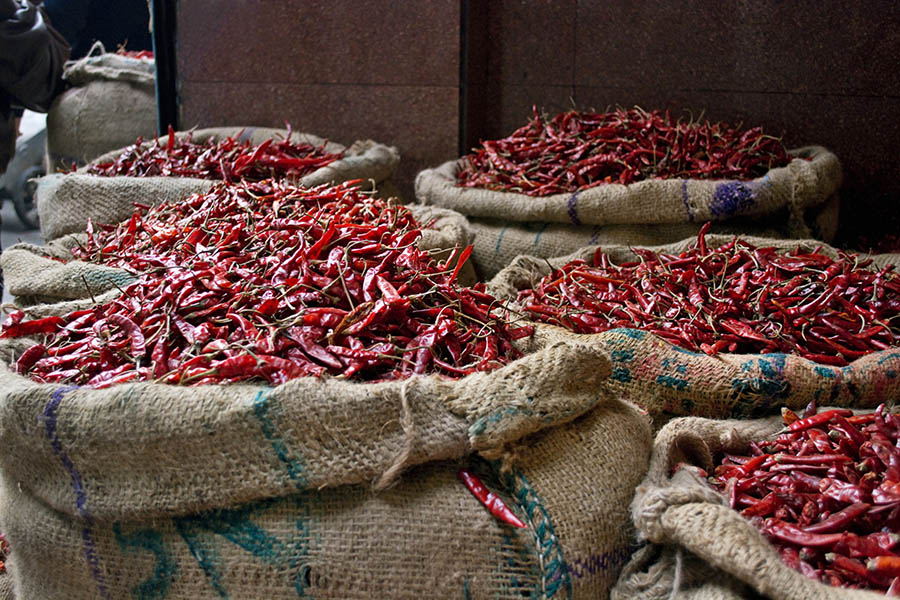HOW IT WORKS
Spice Stores

- Retailers specializing in the sale of spices, herbs, and seasonings.
Spice stores are retail establishments that specialize in offering a wide variety of herbs, spices, seasonings, and blends to enhance the flavor of dishes. These stores cater to home cooks, professional chefs, and food enthusiasts looking to elevate their culinary creations with high-quality and unique spice offerings.
Key characteristics of spice stores include a diverse selection of spices sourced from around the world, knowledgeable staff to provide guidance on flavor profiles and usage, and the option to purchase spices in various quantities to suit individual needs. Common products offered by spice stores include whole spices, ground spices, spice blends, salts, peppers, and specialty seasonings.
The target audience for spice stores includes individuals passionate about cooking, baking, and experimenting with different flavor profiles in their dishes. Professional chefs and restaurants also frequent spice stores to procure high-quality and fresh spices to enhance their menus.
Typical business models for spice stores include brick-and-mortar retail locations, online stores, and specialty spice subscription services. Notable trends within the industry include an increased demand for organic and ethically sourced spices, unique spice blends curated by expert chefs, and the rise of spice-focused cooking classes and workshops.
The unique value proposition of spice stores lies in their ability to provide customers with access to a wide range of high-quality and exotic spices that may not be readily available in conventional grocery stores. Challenges faced by spice stores include competition from large chain retailers, maintaining a fresh inventory of spices, and educating consumers on the benefits of using premium spices in their cooking.
Overall, spice stores play a crucial role in the culinary landscape by offering a one-stop destination for individuals seeking to elevate their cooking experience with premium and diverse spice offerings.
The operational cycle of a Spice Store begins with identifying market opportunities and consumer needs related to spices and seasonings. This may involve researching trends, customer preferences, and potential gaps in the market.
Once these opportunities are identified, the Spice Store formulates its products to meet these demands. This may include sourcing high-quality spices, creating unique blends, or offering organic and ethically sourced options. The value proposition may focus on freshness, variety, or affordability.
Marketing and promotional strategies are then employed to reach target audiences and generate interest. This could involve online advertising, social media campaigns, collaborations with influencers or chefs, and participation in food-related events.
Sales and distribution processes are crucial for a Spice Store, which may include selling products in-store, online, or through partnerships with other retailers. Customer interactions are important, as staff may provide advice on spice pairings, cooking tips, and recipe suggestions.
Post-sale services or support may include follow-up emails, recipe cards, or loyalty programs to ensure customer satisfaction and encourage repeat business. Feedback from customers is valuable for continuous improvement, such as introducing new products, adjusting pricing, or enhancing the shopping experience.
Overall, a Spice Store must constantly adapt to market trends, customer preferences, and competition to remain successful and meet the evolving needs of spice enthusiasts.
In the realm of spice stores, daily operations face challenges in resource management (sourcing and stocking diverse spices), communication & collaboration (ensuring clear communication with suppliers and customers), process inefficiency (ineffective inventory rotation and restocking), inventory management (maintaining accurate stock levels), quality control (ensuring freshness and authenticity of spices), technology integration (implementing inventory software for better tracking), data management (organizing and analyzing sales data), and risk management (handling potential contamination issues). Strategies for overcoming these hurdles include implementing efficient inventory systems, establishing strong supplier relationships, conducting regular quality checks, and investing in technology for better data management.
-
Webspad has revolutionized our spice store operations by seamlessly integrating inventory software, streamlining our stocking processes, and enhancing communication with both suppliers and customers. With their expert support, we have overcome resource management challenges, improved inventory accuracy, and ensured the freshness and authenticity of our spice offerings. Webspad’s technology integration has allowed us to track sales data effectively and optimize our business strategies, resulting in increased efficiency and customer satisfaction. Their tailored solutions have truly transformed our day-to-day operations, making us more agile and competitive in the ever-evolving spice market.
Spice Stores Merchant Tweet / X

